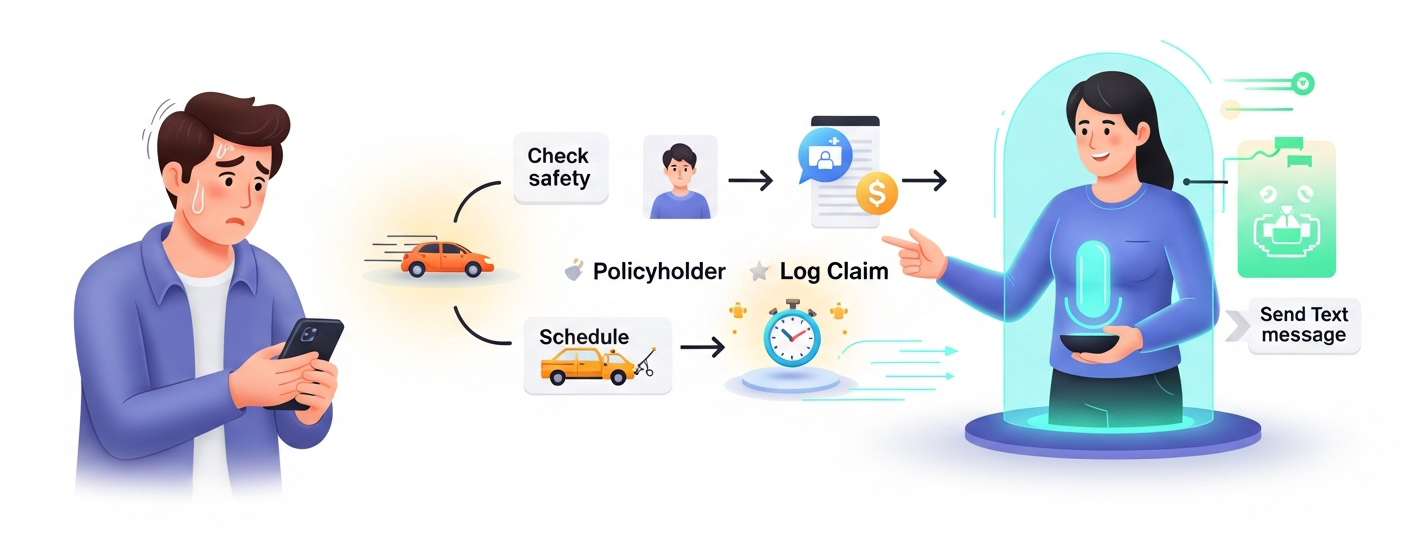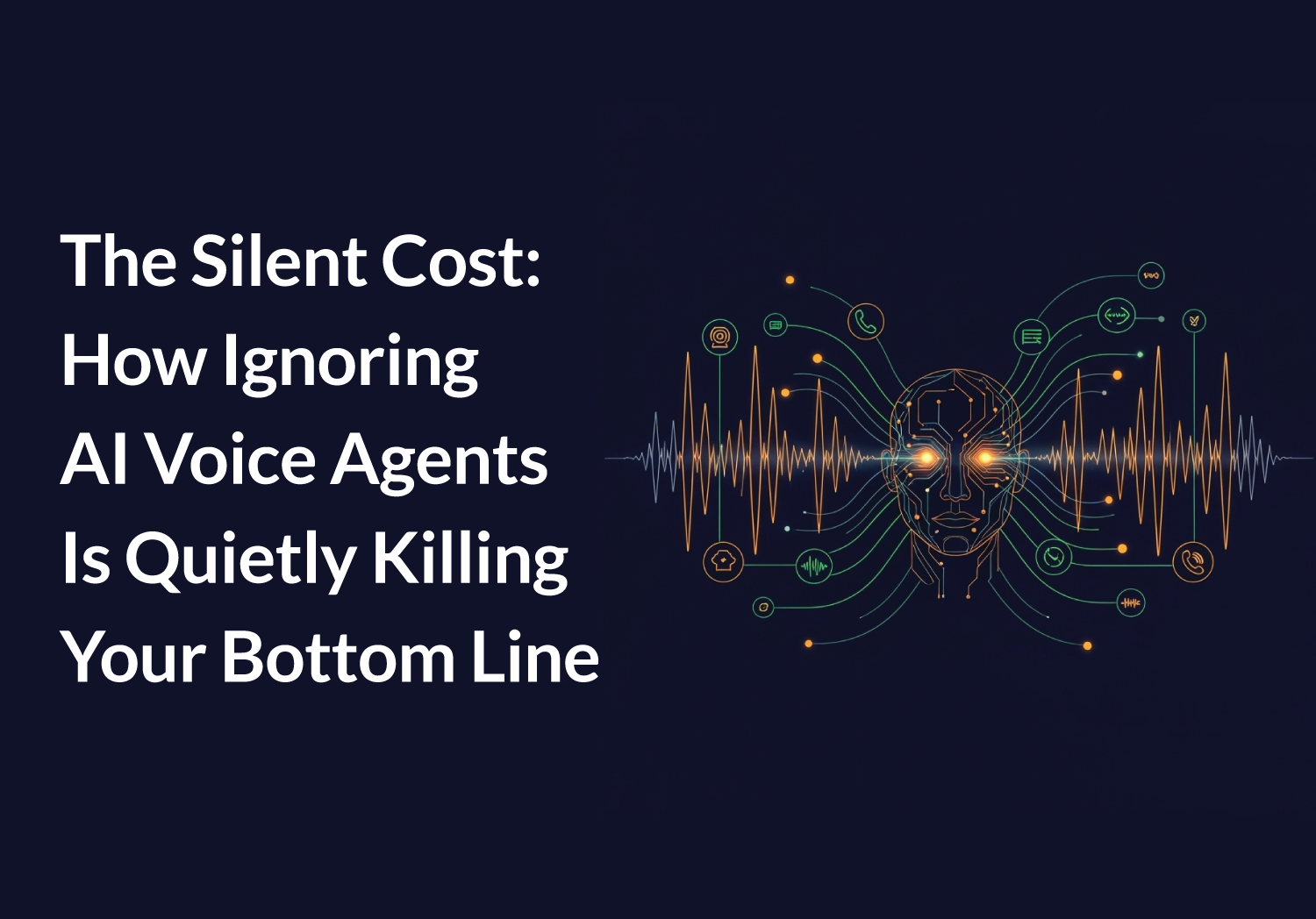Forget everything you've been told about "digital transformation." It’s not about flashy dashboards or bloated software suites. The next seismic shift in business is happening in the most fundamental human medium of all: voice. But it's not your voice, or your team's. It's the voice of a sophisticated, tireless, and hyper-efficient AI voice agent, and its absence in your operations is no longer a competitive disadvantage—it's a critical failure.
We're not talking about the clumsy, robotic IVR systems of the past that made customers scream "OPERATOR!" into their phones. We're talking about conversational AI so advanced it can detect emotional nuance, understand complex intent, and solve multi-step problems in real-time, 24/7/365. This isn't a futuristic concept; it's the new operational standard for industries from insurance and healthcare to real estate and law.
This deep dive goes beyond the tired clichés of "boosting efficiency." We will dissect the tangible, industry-specific mechanics of how AI voice agents are creating unprecedented value. We'll explore irrefutable data, real-world case studies, and a strategic blueprint for implementation. Prepare to understand not just the cost of inaction, but the profound opportunity you're missing with every unanswered call.
The Inescapable Economics: Human Instinct vs. AI Precision
The initial hesitation to adopt AI often comes from a place of financial uncertainty. Let's dismantle that with cold, hard numbers. The traditional human-powered contact center is an economic model built on sand, burdened by salaries, benefits, training, turnover, and the physical limitations of the 8-hour workday.
A landmark analysis by Forrester reveals a stark reality: the fully-loaded cost of a single human agent interaction averages between $7 to $15, depending on complexity. Now, compare that to an AI-powered interaction. A 2024 report from Aberdeen Strategy & Research places the average cost of a fully automated voice interaction at less than $0.25.
Let’s translate that. For a business handling a modest 20,000 inbound queries a month:
- Human-Powered Model: 20,000 interactions @ $8/call = $160,000 per month.
- AI-Powered Model: 20,000 interactions @ $0.25/call = $5,000 per month.
This isn't just about cost savings; it's about reallocating capital. The $155,000 saved isn't just profit; it's your new R&D budget, your marketing expansion, your ability to hire high-level strategists instead of operators. Moreover, a study by ContactBabel found that AI can increase agent capacity by up to 40%, not by replacing them, but by augmenting them—handling the repetitive queries so humans can manage the complex, high-value relationships. The financial argument isn't just strong; it's absolute.

The Sector-by-Sector Disruption: A Deep Dive into Use Cases
The true genius of AI voice agents lies in their chameleon-like ability to adapt to the specific pain points of any industry.
Insurance: From Tedious Claims to Proactive Partnerships
The insurance industry is built on trust and timely support, yet it's often bogged down by manual processes. AI voice agents are injecting speed and intelligence into every policyholder interaction.
Use Case 1: The "First Notice of Loss" (FNOL) Concierge. A policyholder is in a minor car accident. Shaken, they call their insurer. The AI voice agent immediately recognizes the caller's number, pulls up their policy, and greets them with an empathetic tone. It guides them through the FNOL process with simple questions: "Are you and everyone else safe?" "Can you describe your location?" "Can I arrange for a tow truck to be sent to you now?" It simultaneously logs the claim, provides a claim number, and sends a text message with a link to upload photos of the damage. What used to be a stressful 20-minute call is now a guided, 4-minute process.
Case Study: Lemonade Insurance. While known for their chatbot, Lemonade has been a pioneer in using AI to process claims at record speed. Their AI-powered systems can settle simple claims in as little as three seconds. According to a report by Celent, this level of automation reduces the claims processing cost by over 50% and drastically increases customer satisfaction, turning a moment of crisis into a moment of trust.
Use Case 2: Proactive Policy Renewal & Upselling. Instead of a generic renewal letter, an AI voice agent can place a personalized outbound call a month before a policy expires. "Hi Sarah, this is your virtual assistant from Apex Insurance. I see your auto policy is up for renewal next month. Based on your clean driving record this year, you're now eligible for our safe driver discount, which will save you $150. Would you like me to apply that and renew your policy now?" This proactive, value-driven approach has a much higher conversion rate than passive, paper-based methods.

Healthcare: Engineering Empathy and Efficiency at Scale
The healthcare industry is drowning in administrative tasks, leading to physician burnout and fragmented patient journeys. AI voice agents are the lifeline.
Use Case 1: The Intelligent Patient Intake System. A patient calls a large hospital network. An AI voice agent with advanced NLP engages them. The patient says they need to see a cardiologist for chest pain. The AI, recognizing keywords of urgency, immediately triages the call. It cross-references the patient's Electronic Health Record (EHR), identifies their primary care physician, checks the cardiologist's real-time availability, and offers three appointment slots, all within 90 seconds. A study by Medical Group Management Association (MGMA) found that patient no-shows cost the average physician $150,000 a year, a problem AI reminder calls can reduce by up to 30%.
Case Study: Northwell Health. New York’s largest healthcare provider deployed an AI-powered voice solution to automate follow-up calls to discharged patients. As reported by Becker's Hospital Review, the system successfully reached tens of thousands of patients, flagging at-risk individuals for immediate follow-up by a human nurse. This dramatically reduced readmission rates and freed up thousands of nursing hours.
Use Case 2: Proactive Medication Adherence. An AI voice agent calls elderly patients with a personalized reminder. This simple interaction is a powerful tool in improving outcomes for a problem that costs the U.S. healthcare system an estimated $300 billion annually, according to NEHI.

Real Estate & Brokerages: Speed to Lead, Perfected
In real estate, the agent who responds first almost always wins. AI voice agents make instantaneous response the default.
Use Case 1: The 24/7 Open House. A potential buyer submits a "More Info" request on Zillow at 2 AM. Before the human agent's alarm clock goes off, their AI voice agent places a call. The lead is captured and qualified while the competition is asleep. A landmark report, often cited by the National Association of Realtors, confirms that leads contacted within the first 5 minutes are 100 times more likely to be qualified.
Case Study: a la mode, inc. This real estate technology company developed an AI assistant for property appraisers. Their data showed a 70% reduction in time spent on scheduling and a 25% increase in completed appraisals per week.
Use Case 2: Automated Tenant Screening and Maintenance. For property management firms, AI voice agents can handle initial tenant inquiries and act as a first-line-of-defense for maintenance requests, diagnosing the issue and automatically creating a work order.
Legal & Financial Services: Fortifying Trust with Flawless Execution
In worlds governed by precision and compliance, there is no room for error. AI voice agents provide accuracy and consistency.
Use Case 1 (Legal): Automated Client Intake & Conflict Checks. A potential client calls a law firm. The AI voice agent guides them through a structured intake process and can run an instant, preliminary conflict check against the firm's existing client database.
Use Case 2 (Financial): Proactive Fraud Detection and Authentication. A customer's credit card is flagged. An AI voice agent places an immediate verification call. This proactive interaction is far more effective at preventing fraud, which Juniper Research predicts will cost businesses over $48 billion annually by 2025.
Case Study: A Major U.S. Financial Institution. By using conversational AI for password resets and account balance inquiries, many banks have seen massive operational savings. A case study from IBM highlights one bank that offloaded 3.5 million calls from its human agents in the first year, allowing agents to focus on complex advisory services.
The Blueprint for a Successful Voice AI Implementation
Deploying an AI voice agent is a strategic initiative, not an IT project. Follow this framework for a seamless and successful integration.
Phase 1: The Diagnostic (Weeks 1-2)
Identify the Friction: Use call logs to identify the top 3-5 high-volume, repetitive tasks. This is your target. Define Success Metrics: Set clear, quantifiable KPIs from day one (e.g., reduce average handle time by 30%, increase lead capture by 50%).
Phase 2: The Platform & Design (Weeks 3-6)
Vendor Selection: Look for a partner with robust NLP, seamless CRM/EHR integration, and strong security credentials (HIPAA, SOC 2, GDPR). Modern platforms, like Aloware, now offer no-code AI agent builders, allowing you to design and deploy sophisticated conversational flows without needing a team of developers.
Phase 3: The Pilot & Training (Weeks 7-10)
Launch a Pilot Program: Roll out the AI to a small segment of your call volume (5-10%). Train the AI, Train the Team: Use pilot data to refine the AI. Train your human agents on how to collaborate with their new AI "teammate."
Phase 4: The Scale & Optimization (Ongoing)
Iterate Relentlessly: Use analytics to identify where conversations are failing and continuously refine the flows. Expand Use Cases: Once successful, move on to the next friction point on your list.
Phase 5: Governance & Ethics (Crucial)
Ensure Transparency: Implement clear disclosures, letting customers know they are interacting with an AI. Prioritize Data Privacy: Maintain robust data security protocols for all conversations, ensuring compliance with all relevant regulations.
The Inevitable Future: From Agents to Autonomous Systems
The technology we've discussed is just the beginning. The trajectory of conversational AI is moving towards fully autonomous agents. Imagine a future where a customer's call to their insurance company after an accident triggers an AI that not only logs the claim but also dispatches a tow truck, schedules a rental car, and books an appointment at a body shop, all without a single human touchpoint.
This is not science fiction. The businesses laying the groundwork today by integrating AI voice agents are not just optimizing their current operations; they are building the foundational infrastructure for the next era of autonomous commerce.
The question is no longer if your business will need a voice AI strategy, but how far behind you'll be when you finally decide you do. The revolution is happening now. Are you listening?
Ready to stop leaving money on the table? The Aloware AI Agent is a no-code platform designed to implement these exact strategies, from 24/7 lead qualification in real estate to automated patient intake in healthcare. It integrates directly with your existing systems and allows you to build your own tireless, hyper-efficient voice agent in minutes.
Book a Demo of the Aloware AI Agent Today
